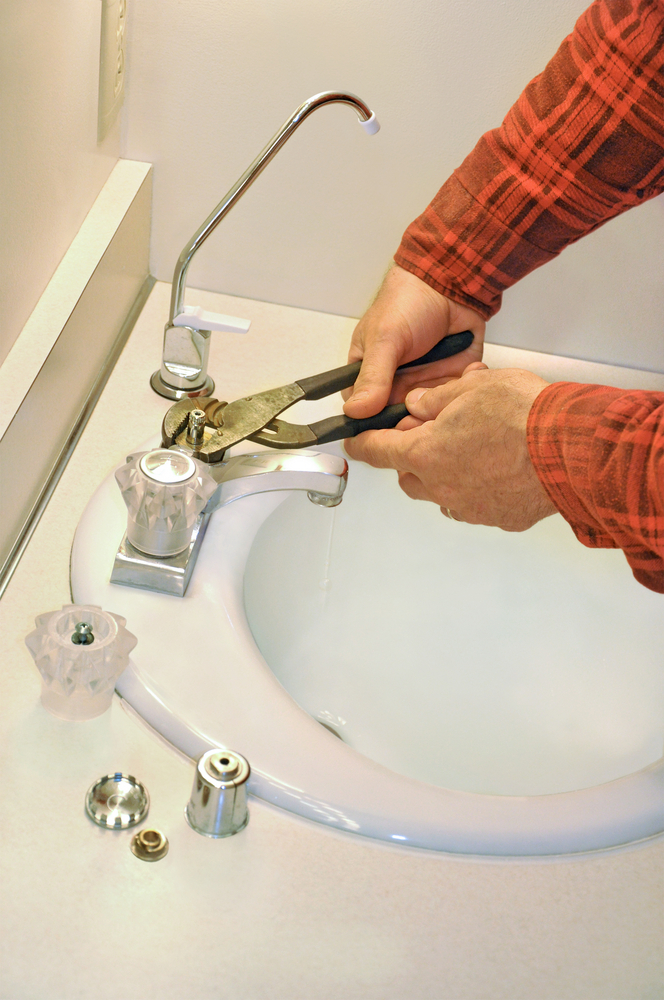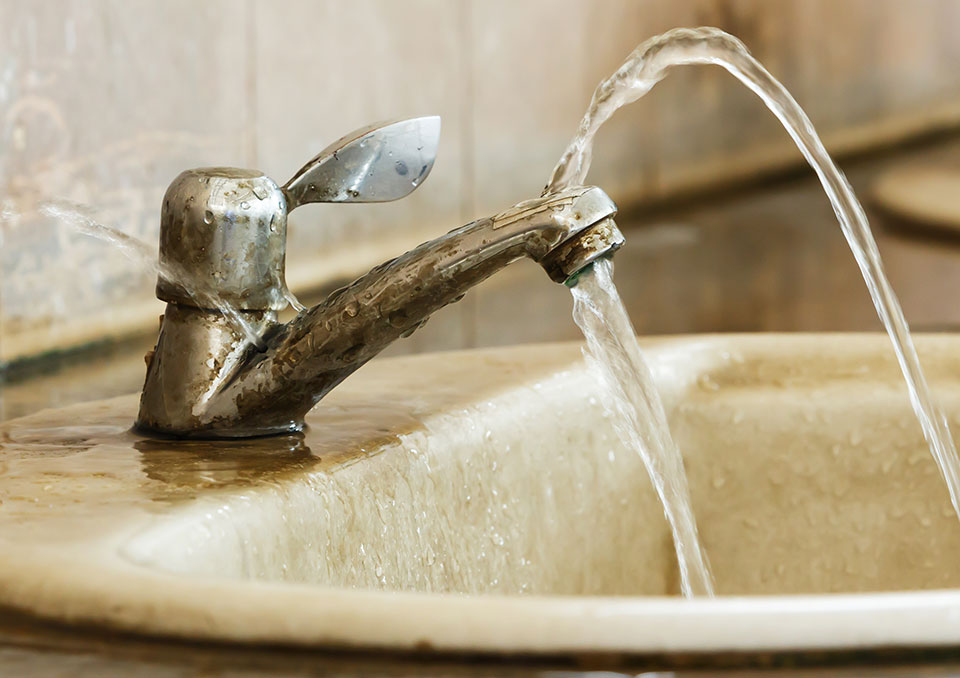Why It's Essential to Mend a Broken Faucet
Why It's Essential to Mend a Broken Faucet
Blog Article
Are you looking for details about Water Dripping from Faucet: Why and How to Fix?

Leaking taps could look like a small inconvenience, but their influence goes beyond simply the annoyance of the audio. From wasting water to incurring unneeded monetary costs and wellness dangers, disregarding a trickling tap can lead to different effects. In this post, we'll explore why it's vital to address this common house issue without delay and successfully.
Waste of Water
Ecological Influence
Leaking faucets contribute substantially to water wastage. According to the Environmental Protection Agency (EPA), a single faucet dripping at one drip per second can squander more than 3,000 gallons of water annually. This not only strains water resources yet additionally affects ecosystems and wild animals depending on them.
Financial Expenses
Boosted Water Bills
Beyond the ecological impact, leaking taps can inflate water bills considerably. The accumulated waste with time converts into higher utility costs, which might have been stayed clear of with prompt repairs.
Prospective Building Damages
Moreover, long term trickling can bring about harm to components and surfaces surrounding the tap. Water build-up can cause discoloration, deterioration, and even structural concerns if left neglected, causing extra fixing costs.
Health Problems
Mold and Mold Growth
The consistent existence of dampness from a leaking tap develops a suitable environment for mold and mold development. These fungi not only endanger interior air quality however additionally pose health dangers, specifically for people with respiratory conditions or allergies.
Waterborne Illness
Stagnant water in leaking faucets can end up being a breeding place for microorganisms and various other pathogens, enhancing the danger of waterborne diseases. Contaminants such as Legionella bacteria thrive in stationary water, possibly causing major diseases when ingested or breathed in.
DIY vs. Professional Fixing
Pros and Cons of DIY Repair
While some might try to take care of a leaking faucet themselves, DIY fixings feature their own set of challenges. Without correct understanding and tools, DIY attempts can aggravate the problem or result in incomplete repair services, extending the issue.
Advantages of Working With a Specialist Plumber
Hiring a professional plumber makes certain that the underlying root cause of the dripping tap is dealt with efficiently. Plumbings have the know-how and tools to diagnose and repair tap issues effectively, conserving time and reducing the danger of more damage.
Step-by-Step Overview to Dealing With a Dripping Faucet
Tools Required
Before attempting to repair a leaking faucet, gather the required tools, including an adjustable wrench, screwdrivers, replacement parts (such as washing machines or cartridges), and plumber's tape.
Usual Tap Issues and Their Solutions
Recognize the kind of faucet and the specific concern creating the drip. Typical problems include worn-out washers, rusty valve seats, or faulty O-rings. Describe maker instructions or on-line tutorials for detailed guidance on fixings.
Preventive Measures
Regular Upkeep Tips
To prevent leaking taps, perform regular upkeep such as cleaning up aerators, checking for leakages, and changing damaged components immediately. Furthermore, think about setting up water-saving gadgets or upgrading to much more effective fixtures.
Significance of Prompt Repair Works
Dealing with dripping taps as quickly as they're observed avoids further water wastefulness and possible damage, eventually saving both water and cash in the long run.
Influence On Property Worth
Understanding of Well-Maintained Residential Or Commercial Property
Keeping a building in good condition, including resolving maintenance concerns like dripping taps, boosts its regarded worth and worth amongst possible buyers or occupants.
Impact on Resale Worth
Qualities with well-maintained plumbing fixtures, including taps, command higher resale values in the real estate market. Resolving dripping faucets can add to a positive impression during residential property inspections and negotiations.
Ecological Duty
Specific Contribution to Conservation
Taking duty for dealing with trickling faucets aligns with broader initiatives towards water conservation and ecological sustainability. Every person's actions jointly make a considerable impact on maintaining precious sources.
Sustainable Living Practices
By focusing on timely repairs and taking on water-saving practices, people contribute to lasting living practices that benefit both present and future generations.
Verdict
Dealing with a trickling faucet exceeds plain convenience; it's a crucial step toward saving water, lowering financial costs, and safeguarding health and wellness and building. Whether via DIY repair work or expert help, doing something about it to repair trickling faucets is a small yet impactful method to advertise liable stewardship of sources and add to a much healthier, extra sustainable future.
How to Fix a Leaky Faucet: Step-by-Step Repair Guide
A leaky faucet may seem like a simple annoyance, but if it's not fixed promptly, that leak could cost hundreds to potentially thousands. From water damage to mold, mildew, and high water bills, even a tiny leak can be catastrophic if left unattended. Damage like this can even affect the overall value of your home, so it's important to take the right approach for leaky faucet repair. You may need the help of a plumber in some cases, but we've got a few tips you can try on how to fix a leaky faucet before calling the pros.
Four Faucet Types
When you're learning how to fix a leaky faucet, the first step is knowing what kind of faucet you're working with! There are four common types.
Cartridge Faucets
Cartridge faucets come in one- or two-handled varieties. In one-handled cartridge faucets, hot and cold water combines in a single cartridge. In the two-handled versions, hot and cold water are controlled separately and mixed in the faucet.
Ball Faucets
Ball faucets have a single lever you push up and down to adjust the pressure and rotate to change the temperature. A slotted metal ball controls the amount of water allowed into the spout.
Compression Washer Faucets
They're the oldest type of faucet, but they're still used in many homes — especially older ones. Compression faucets have two separate handles that, when turned, raise or lower the washer that seals a water valve. This valve stops water from flowing through the faucet when it is turned off.
Disc Faucets
Disc faucets rarely need to be repaired due to their maintenance-free design. The water flow is controlled by two discs — the upper one raises and lowers against a fixed lower disc, creating a watertight seal. If your disc faucet starts leaking, you may need to replace the seals or clean residue buildup from the inlets.
Fixing a Leaky Faucet
Step 1: Turn Off the Water
Whether you're learning how to fix a leaky bathtub faucet or how to fix a leaky kitchen faucet, always turn off the water supply to your working area when you're fixing a leak. The last thing you want is a flood added to your list of things to fix.
Look for the shutoff valves below your sink or around the tub and turn them clockwise to stop the water flow. If your faucet doesn't have shutoff valves, you may need to turn off the water for the whole house. Check to make sure it's off by turning the faucet on. If nothing comes out, you're ready to start the repair.
Step 2: Take Apart the Faucet
How you disassemble your faucet depends on the type of fixture you have. You can use a flathead screwdriver to remove the caps on top of the handle or handles for cartridge and compression faucets. Inside, you should see handle screws. Unscrew these with a screwdriver to remove the handle.
Disc- and ball-style faucets will typically have an inlet screw near the handle, and removing that will reveal the interior of the faucet.
Detach the Valve Stem
For cartridge- and compression-style faucets, you'll see the inner valve stem or cartridge once you remove the faucet handles. If you have a compression faucet, unscrew the brass valve stem. If you have a cartridge faucet, pull out the cartridge. If your cartridge has been in place for a while, it may require some tools or extra force to remove it due to mineral deposits.
Examine and Replace Parts
Once you've removed the parts, check them out to confirm what needs to be replaced. You may see corroded rubber washers, O-rings, stems, or cartridges. On a ball-style faucet, check the seats and springs for damage.
If you need to repair a leaky disc faucet, check the inlet and seals on the lower disc.
Once you determine what parts must be replaced, visit your local hardware store. Bring the damaged parts with you to ensure you can purchase the correct components to replace them.
Clean Valves and Faucet Cavity
If you've removed a stem or cartridge, you may notice mineral buildup in the faucet's threads. Use white vinegar to clean the valve seat by soaking it for a few minutes, then scrub it away with a soft toothbrush and rinse with warm water. You can also clean the interior of the faucet in the same way.
Reassemble the Faucet
Once your faucet is cleaned and the required parts have been replaced, it's time to reassemble it. Put the pieces back together and slowly turn the water supply back on. Doing this slowly is crucial because too much initial water pressure can damage the new hardware you've just installed.
https://homewarranty.firstam.com/blog/how-to-fix-leaky-faucet

Hopefully you enjoyed our piece on How to Fix a Dripping or Leaky Faucet . Many thanks for taking a few minutes to read through our article. In case you enjoyed reading our blog posting plz make sure you remember to pass it around. Thank-you for your time invested reading it.
Report this page